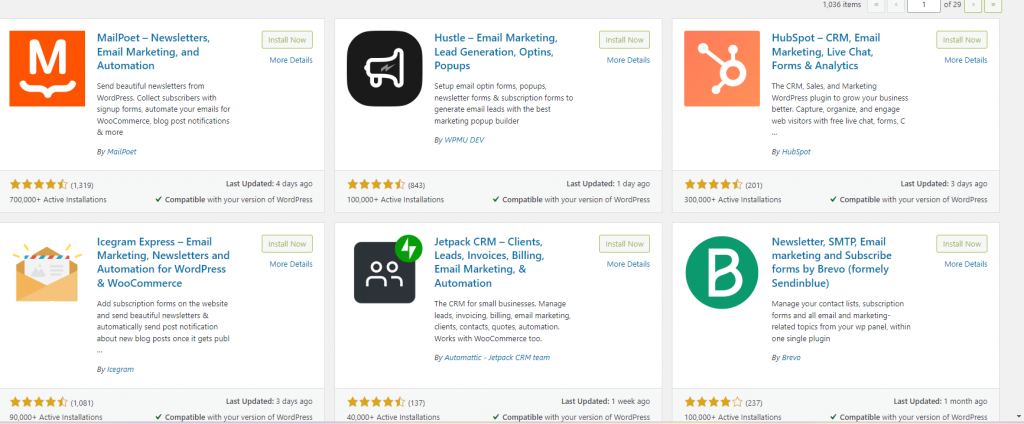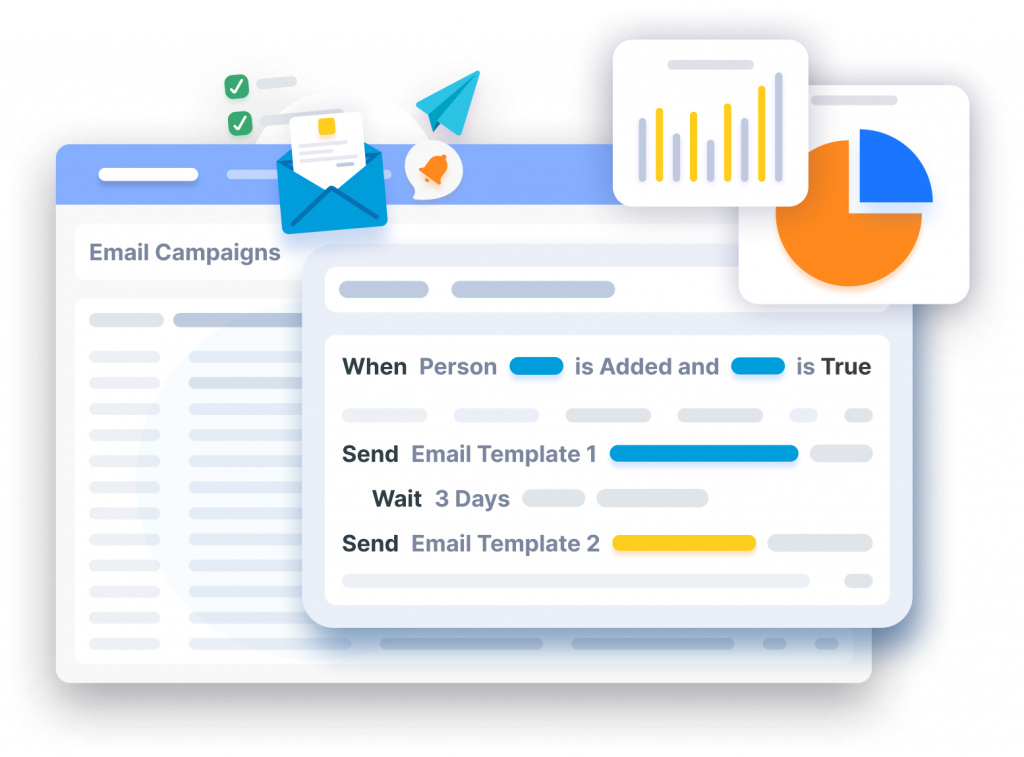Email marketing is a vital component of any successful online presence, and integrating it seamlessly into your WordPress website can significantly enhance your marketing efforts. With WordPress’s robust ecosystem, there are various ways to incorporate email marketing tools and strategies into your site.
One of the most popular methods is by utilizing email marketing plugins available in the WordPress repository. Plugins such as Mailchimp for WordPress, Constant Contact, or OptinMonster offer seamless integration with your website, allowing you to build email lists, create engaging opt-in forms, and send targeted email campaigns directly from your WordPress dashboard.
To get started with email marketing on your WordPress website, follow these steps
Choose an Email Marketing Plugin
Begin by selecting an email marketing plugin that suits your needs and budget. Look for features such as list building, automation, and analytics to ensure you have the tools necessary to grow your email list and engage with your audience effectively.

-
Mailchimp for WordPress:
-
This plugin integrates your WordPress website seamlessly with Mailchimp’s email marketing platform.
-
It allows you to create customizable sign-up forms, manage your subscriber lists, and send targeted email campaigns directly from your WordPress dashboard.
-
Mailchimp for WordPress also offers advanced features such as e-commerce integration, automated workflows, and detailed analytics.
-
-
Constant Contact for WordPress:
-
Constant Contact’s official WordPress plugin enables you to easily collect email addresses, create and send newsletters, and track your email marketing performance.
-
It provides customizable sign-up forms, list segmentation options, and access to Constant Contact’s library of email templates.
-
With Constant Contact for WordPress, you can seamlessly integrate your website with your email marketing efforts to engage and grow your audience.
-
-
ConvertKit for WordPress:
-
ConvertKit’s WordPress plugin is designed for bloggers, content creators, and online entrepreneurs who want to simplify their email marketing processes.
-
It offers customizable opt-in forms, subscriber tagging and segmentation, and automated email sequences directly within WordPress.
-
ConvertKit for WordPress also provides integration with popular plugins like WooCommerce and Easy Digital Downloads for e-commerce email marketing.
-
-
HubSpot for WordPress:
-
HubSpot’s official WordPress plugin allows you to integrate your WordPress website with HubSpot’s powerful CRM and marketing automation platform.
-
It offers features such as customizable forms, lead capture pop-ups, email marketing campaigns, and detailed analytics.
-
With HubSpot for WordPress, you can streamline your marketing efforts, track user interactions, and nurture leads more effectively.
-
-
Sendinblue for WordPress:
-
Sendinblue’s WordPress plugin enables you to easily add subscription forms, manage subscriber lists, and send email campaigns directly from your WordPress site.
-
It offers customizable sign-up forms, marketing automation workflows, and transactional email capabilities.
-
Sendinblue for WordPress also provides advanced features such as SMS marketing integration and A/B testing for optimizing your email campaigns.
-
These plugins offer various features and integrations to meet your email marketing needs on WordPress.
Be sure to review each plugin’s functionalities, user reviews, and pricing plans to determine which one best fits your requirements.
Install and Activate the Plugin
Once you’ve chosen a plugin, install and activate it on your WordPress website. Most email marketing plugins can be found and installed directly from the WordPress plugin repository, making the process quick and straightforward.
Configure Plugin Settings
After activating the plugin, navigate to its settings page to configure your email marketing preferences. This may include connecting your email marketing account, setting up opt-in forms, and customizing email templates to match your website’s branding.
Create Opt-in Forms
Design and deploy opt-in forms strategically throughout your website to capture visitor email addresses. Place forms in prominent locations such as the homepage, sidebar, or within blog posts to maximize sign-up conversions.
Example image:-

Segment Your Email List
Organize your email subscribers into segments based on demographics, interests, or past behaviour to deliver more personalized and targeted email campaigns. Most email marketing plugins offer built-in segmentation features to help you tailor your messaging effectively.
Design and Send Email Campaigns
With your email list in place, start designing and sending email campaigns to engage with your subscribers. Use compelling subject lines, captivating content, and clear calls-to-action to drive action and achieve your marketing objectives.

Monitor and Analyze Performance
Track the performance of your email marketing campaigns using the analytics provided by your chosen plugin. Monitor metrics such as open rates, click-through rates, and conversion rates to gauge the effectiveness of your campaigns and identify areas for improvement.
Conclusion
In conclusion, integrating email marketing into your WordPress website is a powerful strategy for engaging with your audience, nurturing leads, and driving conversions. By following the steps outlined above and leveraging the capabilities of WordPress and email marketing plugins, you can create compelling email campaigns that resonate with your subscribers and contribute to the success of your online endeavours.






